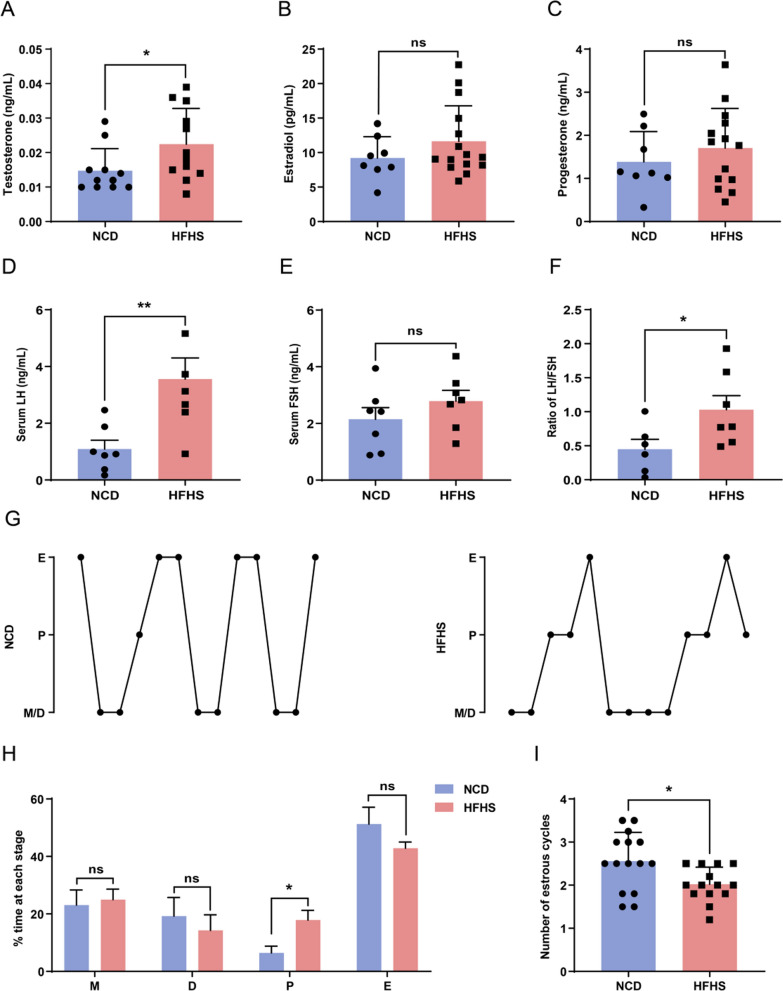Fig. 3.
HFHS diet causes hormonal imbalance and irregular estrous cycles in mice. A Measurement of serum testosterone (T) levels in serum of control and HFHS mice (control, n = 11; HFHS, n = 12). B Measurement of estradiol in serum of control and HFHS mice (control, n = 8; HFHS, n = 15). C Measurement of progesterone in serum of control and HFHS mice (control, n = 8; HFHS, n = 15). D Serum luteinizing hormone (LH) levels of control and HFHS mice (control, n = 7; HFHS, n = 6). E Serum follicle stimulating hormone (FSH) levels of control and HFHS mice (n = 7). F Ratio of LH/FSH of control and HFHS mice (control, n = 6; HFHS, n = 7). G Representative estrous cycles of control and HFHS mice. Vaginal cytology was assessed for 13 days. M, metestrus; D, diestrus; P, proestrus; E, estrus. H Quantitative analysis of estrous cycles in control and HFHS mice (control, n = 6; HFHS, n = 7). I The number of total intact cycles during the estrous assessment period (control, n = 15; HFHS, n = 14). Data are presented as mean ± SEM, ns = not statistically significant, *P < 0.05, **P < 0.01

